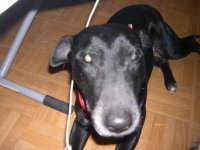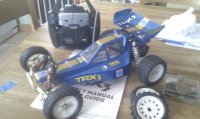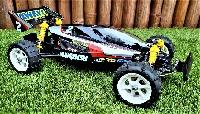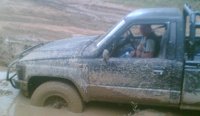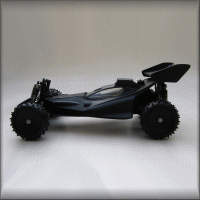TOPIC:
Re: can you identify what make ? 11 years 7 months ago #13724
|
They gave the idea to the creator of the Kitchenaid... |
|
Please Log in to join the conversation. |
Re: can you identify what make ? 11 years 7 months ago #13745
|
|
|
Please Log in to join the conversation. |
Re: can you identify what make ? 11 years 7 months ago #13749
|
|
|
Please Log in to join the conversation.
Last edit: by Martin Bell.
|
Re: can you identify what make ? 11 years 7 months ago #13771
|
That's raised a burning question - what year were these released? - Doesn't that Baja California buggy look awfully similar to Tamiya's Rough Rider? I wonder which came first & which was the rip-off?
Y'know how I said these early cars all look similar to me? - Just found another currently on Ebay UK, item 190733260500, a Thunder Tiger Challenger, apparently. I didn't realize Thunder Tiger were about so early, I thought they were a late 90s thing?
Custom F2
...
Hilux crossmember drawing
...
F2 axle drawing
...
Quattro radio lid
...
Holiday Buggy motor bracket drawing
...
Quattro resto
...
HitnMiss engine
...
Wild Willy resto
...
Mardave Cobra resto
...
Thunder Dragon resto
...
Grasshopper resto
...
XR311 resto
...
Modded XR311
...
Carbon 25th scratch build
|
|
|
Please Log in to join the conversation. |
Re: can you identify what make ? 11 years 7 months ago #13774
|
Me to Eddrick. I knew Thunder tiger when they worked with Model Racing Car( MRC a french trade wich created the Rabbit) with the Patriot 1/8th and the cup series 1/10th. |
|
Please Log in to join the conversation. |
Re: can you identify what make ? 11 years 7 months ago #13777
|
First of all I'm very single minded about Tamiya so haven't spent any energy researching other brands...
So it's interesting to learn how much Kysoho and Graupner are intertwined. Could it be the wheels are from another model? The Racing Baja has Dunlops... Let's check Kyoshobase for the year of origin. I do find it an interesting subject... |
|
|
Please Log in to join the conversation. |
Re: can you identify what make ? 11 years 7 months ago #13781
|
I knew Kyosho & Ripmax were fairly close, I didn't realise Graupner had been involved too - kinda suggests Kyosho concentrate on making stuff, but team up with a popular/successful name to shift it.
I've tried to buy stuff from Kyosho directly in the past, & it appears that they won't deal with the individual, you have to buy via an agent (ie Ripmax, at the time). I'll bet if Graupner have been involved, Robbe will have at some point too. One could say Kyosho models are mongrels? Here's an interesting quest then Edou - see if you can find out who made the first proper RC car (ie freely-drivable, not tether cars) - perhaps it was Mardave, & they're still using the same design/parts....
Custom F2
...
Hilux crossmember drawing
...
F2 axle drawing
...
Quattro radio lid
...
Holiday Buggy motor bracket drawing
...
Quattro resto
...
HitnMiss engine
...
Wild Willy resto
...
Mardave Cobra resto
...
Thunder Dragon resto
...
Grasshopper resto
...
XR311 resto
...
Modded XR311
...
Carbon 25th scratch build
|
|
|
Please Log in to join the conversation. |
Re: can you identify what make ? 11 years 7 months ago #13782
|
Well... that's what wikipedia is for.
One can question the reliability of course...
The following user(s) Liked this: shawn67mustang
|
|
|
Please Log in to join the conversation.
Last edit: by Edou.
|
Time to create page: 0.195 seconds
